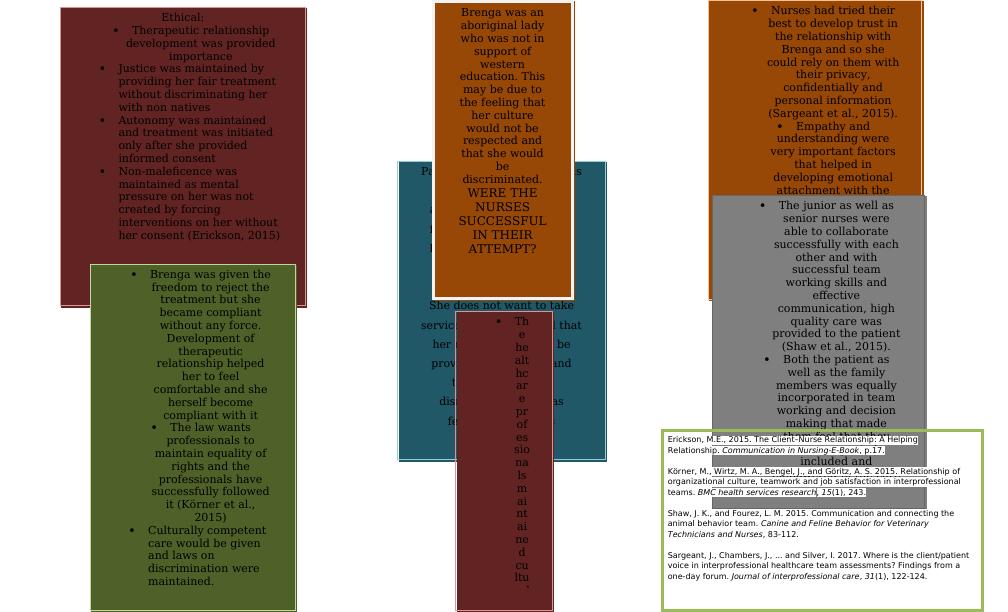Ask a question from expert
Ethical Therapeutic Relationship Development
1 Pages559 Words42 Views
Added on 2021-04-24
Ethical Therapeutic Relationship Development
Added on 2021-04-24
BookmarkShareRelated Documents
End of preview
Want to access all the pages? Upload your documents or become a member.
Healthcare Environment - Assignment PDF
|5
|1014
|68
Inter-Professional Teamwork in Aged Care: iCARE Components
|6
|1291
|390
Rising to the Challenge: Cultural Safety in Nursing
|4
|740
|49
Developing Cultural Competence for Providing Therapeutic Relationship with Aboriginal Patients
|8
|2346
|324
Cultural Safety Issues in Erica's Appendix Case
|4
|1484
|92
Nursing Ethics: Analyzing Ethical Issues in a Case Study
|11
|3380
|334
